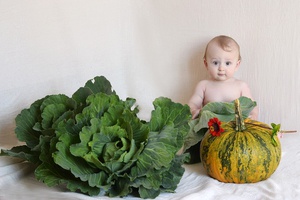En 2010, l’association Générations Futures et le réseau européen HEAL (Health & Environnement Alliance) ont réalisé une étude au sujet de l’alimentation quotidienne des enfants en suivant les recommandations inscrites dans le Plan National Nutrition Santé (PNNS). Le but était de rechercher les substances susceptibles d’être cancérigènes ou perturbatrices endocriniennes et d’en évaluer les quantités journalières absorbées.
L’étude
Le PNNS recommande de manger au moins 5 fruits et légumes par jour. Il préconise aussi la consommation à chaque repas et selon l’appétit de: pains, céréales, pommes de terre, légumes secs et de joindre à cela 3 rations de produits laitiers. Nous devons toutefois limiter le sel, les matières grasses ajoutées et autres produits trop sucrés, tout en buvant de l’eau à volonté (min 1,5 L).
Durant l’étude, les enfants ont eu droit à un chewing-gum pour enfant par jour. Les repas analysés étaient donc équilibrés et conformes à ces recommandations officielles. Les études ont été effectuées par plusieurs laboratoires reconnus et accrédités dans le secteur alimentaire en France et en Belgique.
Voici les détails des menus proposés aux enfants :
- Matin : Thé au lait (eau chauffée en bouilloire en plastique) – pain de mie – beurre – confiture – jus de raisin
- Collation de 10h : pomme
- Midi : salade composée (salade verte, tomate, thon) – haricots verts – steak – baguette – raisin en dessert
- Collation de l’après-midi : smoothies aux fruits rouges
- Soir : salade verte – saumon – riz (plat servi dans une assiette en plastique alimentaire) – citron (pour poissons) – fromage fondu – pain – pêche en dessert
Durant la journée, les enfants s’hydrataient avec de l’eau du robinet et les aliments non bio qui composaient ces repas ont été achetés dans les grandes surfaces de la périphérie parisienne.
Les familles de substances recherchées étaient les suivantes :
Dioxines/furanes – Retardateurs de flamme bromés (PBDE) – PCB Dioxine Like (PCB DL) – Éléments traces toxiques – Pesticides. Les commanditaires de l’étude ont également demandé à faire analyser d’éventuels transferts de plastiques alimentaires vers les aliments (phtalates et BPA), ainsi que les additifs problématiques indiqués dans la composition sur les étiquettes ou sur les emballages des produits. Ont également été recherchés les sous-produits de traitement de l’eau et les résidus de pesticides qu’elle contenait.
Des résultats qui frappent
Voici les résultats de ce qu’absorbent ainsi les bambins alimentés par les circuits d’alimentation de la grande industrie durant une journée entière :
- 128 résidus chimiques ingérés provenant de 81 substances différentes.
Ces 81 substances sont réparties comme suit :
- 42 substances sont classées comme cancérogènes possibles ou probables,
- 5 substances sont classées comme cancérigènes certaines
Ces 47 substances représentent en tout 89 résidus ingérés dans la journée.
- 37 substances différentes sont classées comme perturbateurs endocriniens (PE)
Ces 37 substances représentent en tout 71 résidus ingérés dans la journée.
Il faut noter que 28 substances sont classées à la fois comme possiblement cancérogènes et comme PE.
Seulement 2 résidus de pesticides sont supérieurs aux LMR. Les autres substances chimiques trouvées sont à des niveaux inférieurs par rapport aux différentes normes en vigueur. Rappelons que les LMR (Limites Maximales en Résidus) sont calculées pour un adulte moyen, mais pour chaque substance séparée.
Lors des études et des fixations des seuils de tolérance, les autorités ne tiennent jamais (ou que très rarement) compte :
- du cumul des toxiques que l’on dénomme l’effet cocktail.
Par exemple, une étude de 1996 a mis en évidence des effets de synergie entre des pesticides aux potentiels œstrogéniques faibles. Cela signifie que les effets toxiques des mélanges de pesticides étaient de 150 à 1600 fois plus importants que les effets des pesticides pris isolément.
Une autre étude (2005) a mis en évidence les effets sur la thyroïde de substances chimiques combinées alors que les doses des molécules prises individuellement ne dépassaient pas les taux autorisés.
- la sensibilité de l’enfant et de son système endocrinien encore immature et en pleine croissance
- l’impact des perturbateurs endocriniens sur le développement du système nerveux qui dépend directement du système
- l’état de santé des enfants ou des adultes soumis à ces différentes substances nocives
- consommations individuelles de certaines denrées alimentaires addictives et ingurgitées en excès
Notons aussi que l’on retrouve dans ces analyses des traces de PCB (famille de 209 molécules), or les produits qui en contiennent sont normalement interdits en France depuis 1987.
Cet élément donne pour preuve la ténacité et la bioaccumulation (résultant d’une mauvaise biodégradabilité) des substances créées par la main de l’homme…
Chaque jour de nouvelles molécules résultent du génie de l’homme et prennent place dans notre environnement. Il y a donc fort à parier que le contenu toxique des assiettes de nos enfants ne s’est pas allégé !
Heureusement, de plus en plus de cantines scolaires se tournent vers des aliments d’origine biologique ou provenant de petits producteurs locaux et vraisemblablement moins contaminés.




